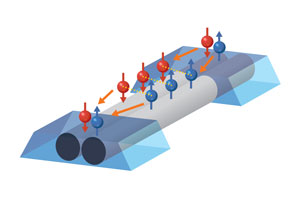
A device that can separate and recombine pairs of electrons may offer a way to study an unusual form of superconductivity, according to RIKEN physicists. This superconducting state would involve exotic particles, Majorana fermions that could prove useful in developing quantum computers.
In conventional superconductors, electrical current flows with no resistance due to electrons teaming up to make ‘Cooper pairs’. A superconductor touching a normal conductor can sometimes induce superconductivity in that conductor through Cooper pairs from the superconductor penetrating the normal conductor.
Now, Sadashige Matsuo of the RIKEN Center for Emergent Matter Science and collea...
Read More








Recent Comments